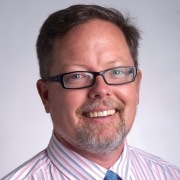
Thomas J Webster
Northeastern University, USA
Title: Two decades of commercializing nanomedicine to improve disease prevention, detection and treatment
Biography
Biography: Thomas J Webster
Abstract
Objective: Nanotechnology (or the use of materials with one dimension less than 100nm) has been revolutionizing the field of medicine for several decades due to the ability of nanomaterials to mimic natural features of healthy tissues. However, issues remain such as toxicity, assembling nanomaterials into functional organs, efficacy, drug loading, cost and lengthy FDA approval times have still proven to be significant obstacles. The objective of this talk is to summarize recent advances in developing nanostructured artificial organs for quick regulatory approval.
Methods: Approaches such as top-down and bottom-up nano approaches along with 3D printing, cast-molding, and other techniques to create artificial organs will be covered. Approaches have been shown to be versatile using ceramics, metals, polymers and composites thereof. In vitro and in vivo studies will be covered. Nanoparticle synthesis will also be covered with challenges and promises.
Results: Such approaches have led to improved interactions with mammalian cells (such as bone, cartilage, vascular, neural, bladder, etc.,) and decreased interactions with immune cells (such as monocytes, macrophages, etc.,) to regenerate organs. Recently, results have shown the ability to decrease bacteria functions without using antibiotics. Lastly, a new approach to medicine focused on controlling Pico scale events will also be introduced where one can dictate electron interactions within a material to improve cellular functions leading to greater organ regeneration.
Conclusions: In summary, this talk will cover what has been learned over the past several decades of translating nanotechnology to improve organ replacement while emphasizing future developments that we should expect for the field to grow (such as Picotechnology).

